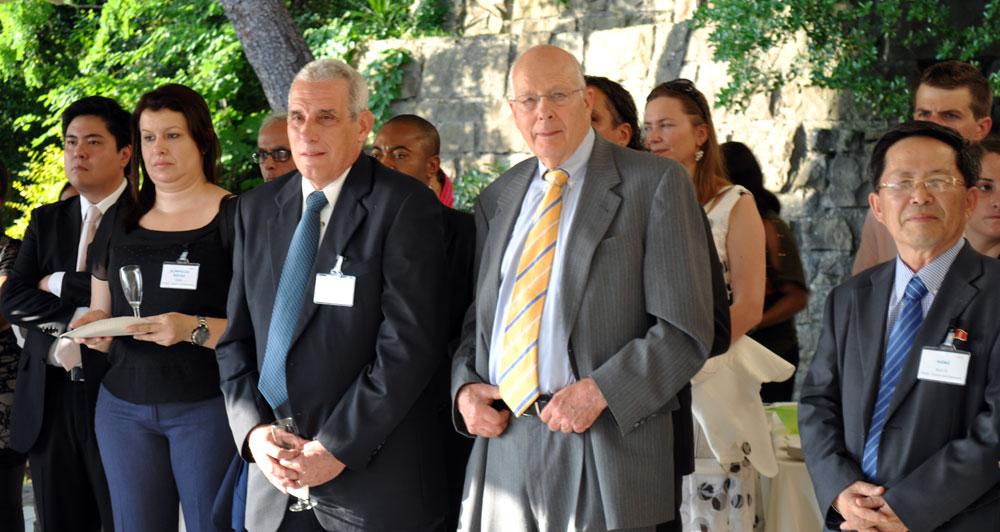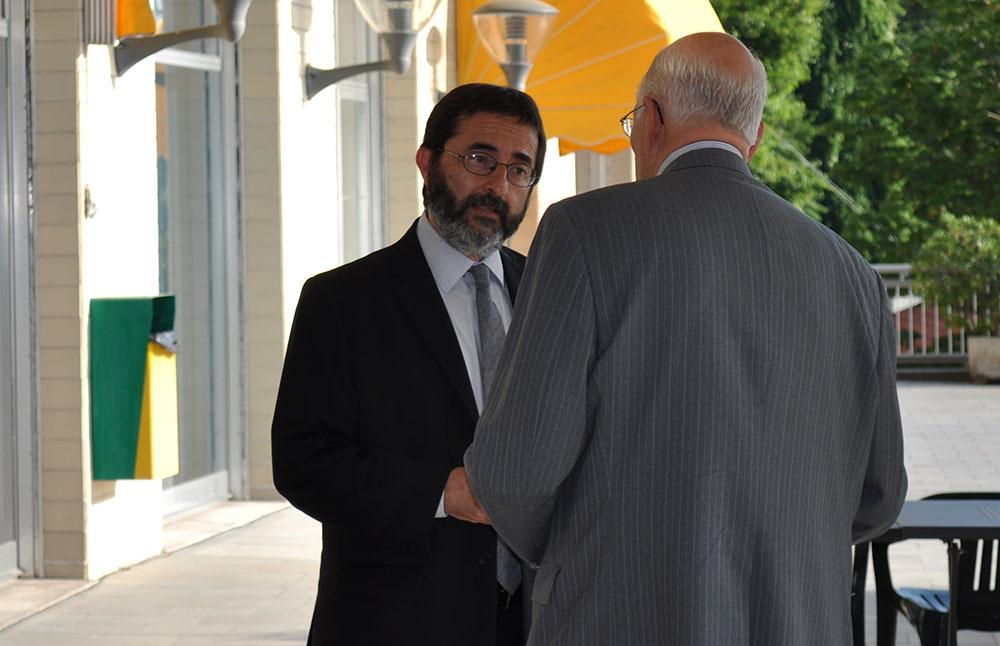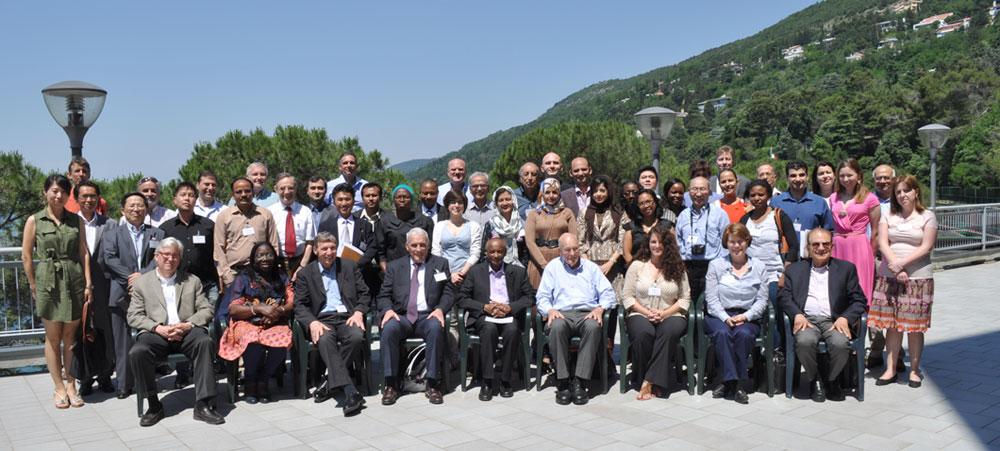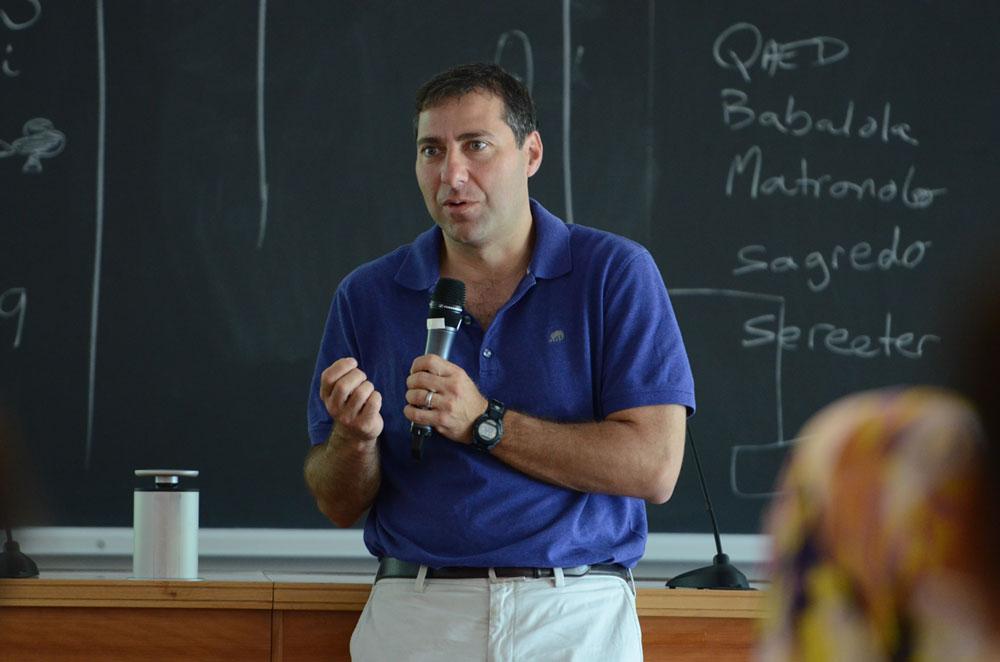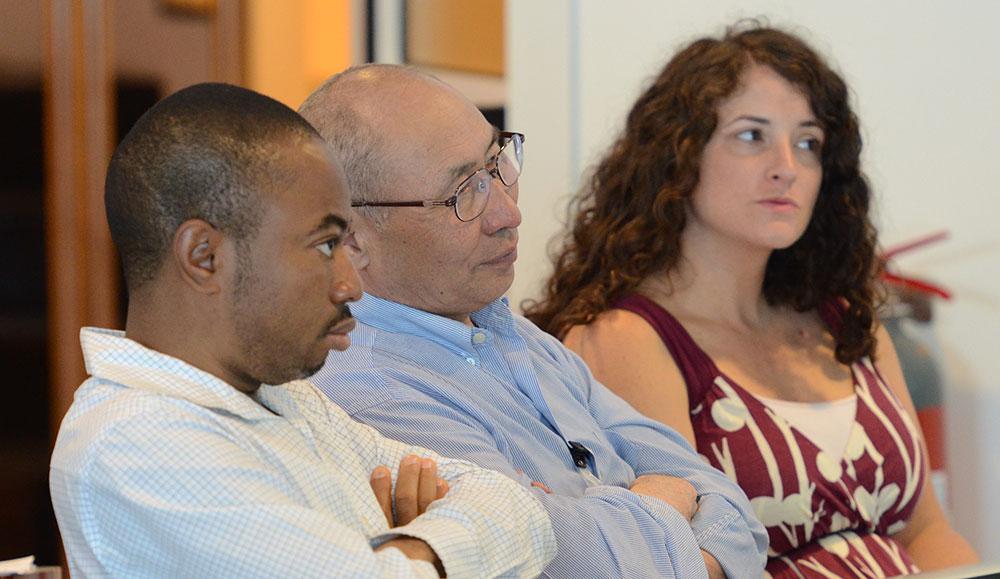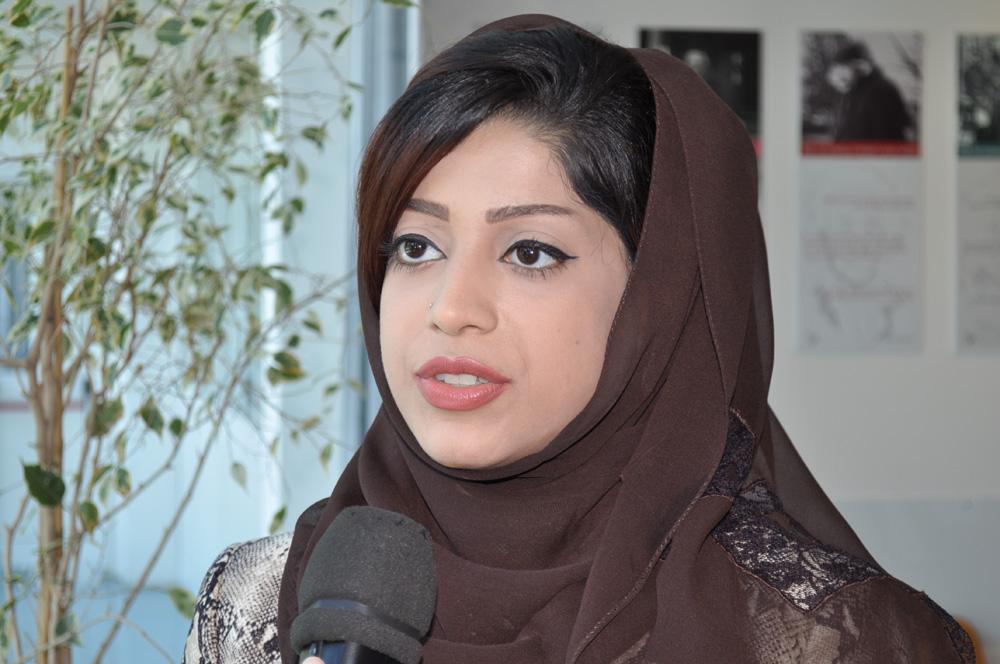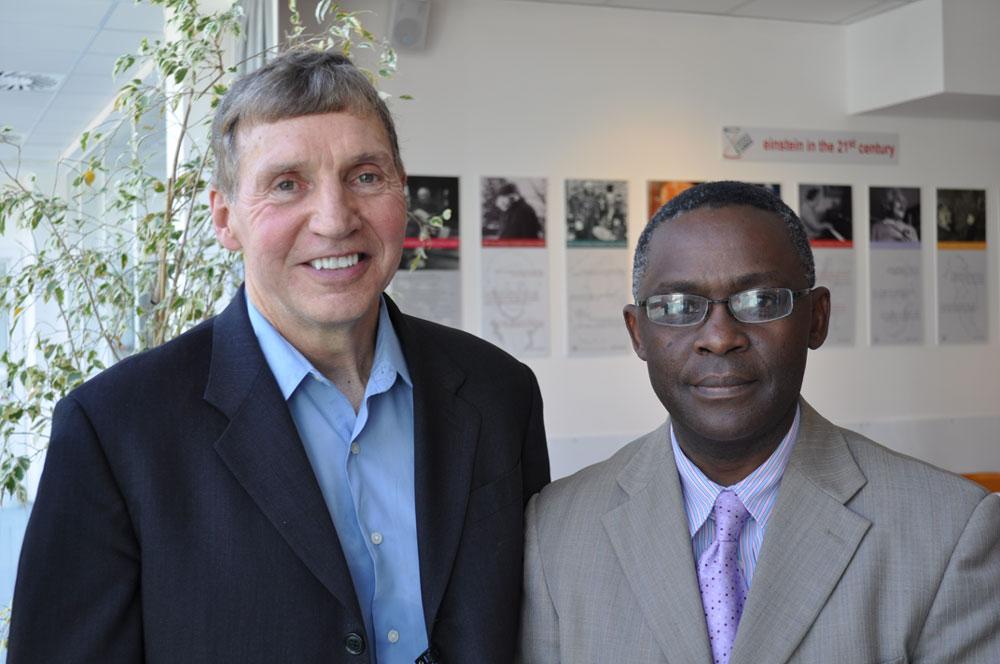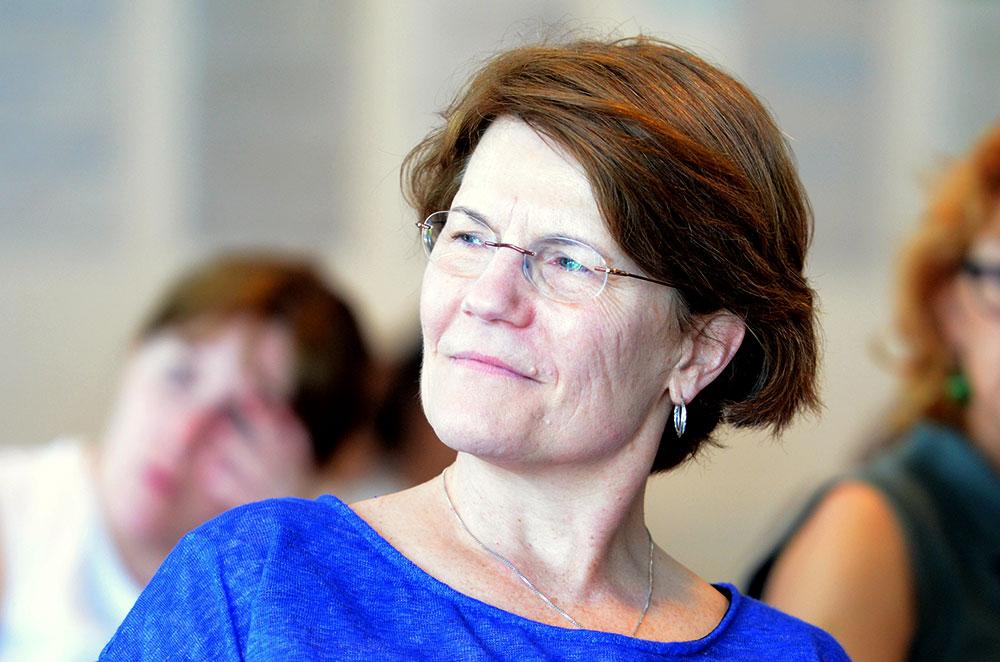![Participants the in first-ever AAAS-TWAS course on science diplomacy, held in Trieste, Italy [photo by Ezio Vuck]](/sites/default/files/inline-images/science_diplomacy_group_1000x451_web.jpg)
Along the fortified border between Poland and Belarus, in the Bialowieża Primeval Forest, researchers from both nations are cooperating to protect the threatened European bison. In the south of France, the European Union and a global partnership of nations are working together – and splitting costs – on the massive ITER project to explore the potential of clean, sustainable fusion energy. Scientists from Cuba and the United States – two nations separated by 90 miles and more than a half-century of animosity – have just struck a historic agreement to cooperate in research on topics of mutual interest.
For three dozen scientists, engineers and diplomats who gathered in Trieste this month for a course in science diplomacy, these case studies illustrated a new generation of science diplomacy at work. The initiatives aren't always easy, and they can face political and cultural obstacles. But when successful, the participants learned, science diplomacy can provide significant benefits to nations and their people.
The potential of science diplomacy lies in a simple premise, said Sergio Jorge Pastrana, foreign secretary of the Academy of Sciences of Cuba: "Scientists can talk in spite of differences between nations, in spite of political tensions."
![Dr. David Hilmers, former NASA astronaut (left), with TWAS Executive Director Romain Murenzi [photo by Ezio Vuck]](/sites/default/files/inline-images/hilmers_murenzi_1000x664_web.jpg) "I don't believe there is any better way of cooperation, and world peace, than through science diplomacy", former US astronaut David Hilmers told the participants as the course opened.
"I don't believe there is any better way of cooperation, and world peace, than through science diplomacy", former US astronaut David Hilmers told the participants as the course opened.
The weeklong course in science diplomacy was organized by the American Association for the Advancement of Science (AAAS) and TWAS. It brought more than 50 participants and expert guides from 32 countries to Trieste from 8-13 June for presentations, case studies, and team exercises designed to develop science diplomacy skills and specific projects.
"It was our intention to give participants a week in which they could build a deeper understanding of the practice – and the potential values – of science diplomacy," said TWAS Executive Director Romain Murenzi. "In the long run, by training people from many countries, we believe that this course can help make contributions to the sustainability of the planet."
The six-day course was supported financially by AAAS through a grant from the Golden Family Foundation, as well as through a contribution to TWAS from the Swedish International Development Cooperation Agency (Sida). A further Sida contribution to the Organization for Women in Science for the Developing World (OWSD) allowed a number of young women graduates from its fellowship programme to attend. The course was co-organized by AAAS and by Peter McGrath and Sara Dalafi from the TWAS science diplomacy project.
The course was a primer for scientists and diplomats, many of them under 40; the hope is that they return home to become science diplomacy practitioners and advocates. In time, they may help to knit together a global culture of science diplomacy that can address a broad range of issues, from climate change and ocean health to infectious disease and education.
Lab coats and chemicals? Cognac and cigars?
Scientists are increasingly working across borders, even when their governments don't get along. And that has engendered a sector of diplomacy by academic institutions, foundations, funding agencies, and non-governmental organizations (NGOs). Still, governments remain central to science diplomacy.
"We're seeing there's more and more interest on the part of countries in how to build the capacity of the foreign ministry to engage in scientific issues," said Vaughan C. Turekian, director of the AAAS Center for Science Diplomacy. "That's true not only in developed countries, but in ![Course co-organizer Vaughan C. Turekian, director of AAAS Center for Science Diplomacy [photo by Edward W. Lempinen]](/sites/default/files/inline-images/vaughan_turekian_1000x662_web.jpg) developing countries as well."
developing countries as well."
The AAAS Center was founded nearly six years ago; AAAS also publishes Science & Diplomacy, with Turekian serving as editor-in-chief. In 2011, AAAS and TWAS signed an agreement to collaborate on a science diplomacy programme. Thus far, however, much of the buzz for science diplomacy has been in the developed world. In the developing world, participants said, scientific research and science education often are not high priorities for governments.
But science diplomacy is hardly a new concept. During America's Revolutionary War in the 18th century, commanders for the opposing sides allowed scientists to go back and forth across battle lines. A few years later, British scientists continued to lecture in France throughout the French Revolution. More recently, scientific cooperation was central to efforts to reduce Cold War tensions between the United States, the Soviet Union and China.
AAAS sent scientific delegations to China in 1979, at a time when the nation was only beginning to open to the outside world; it sent a team to Cuba in 1997, and earlier this year was partner to an historic agreement to support scientific cooperation between Cuban and U.S. scientists in key areas of mutual interest.
The International Centre for Theoretical Physics (ICTP) and TWAS, both founded in Trieste by the late Pakistani Nobel laureate Abdus Salam, were created to promote science in the developing world, and both have had science diplomacy at the core of their work.
"The subject of science diplomacy is very important now, and it will become more important with time," ICTP Director Fernando Quevedo said on the opening night of the course. "ICTP has...been doing science diplomacy for 50 years, and we hope to keep doing it in the fulfilling of our mission."
Today, too, "South-South scientific cooperation is a very important bridge" that can reduce tensions and create understanding between nations, said Mohamed H.A. Hassan, who served 25 years as TWAS's executive director and is currently co-chair of Trieste-based IAP, the global network of science academies.
Even so, the idea of science diplomacy is not well-understood in many parts of the world, whether developed or developing. That's true even among scientists and diplomats.
There's a tendency, Turekian said, for "the science community to look down on the diplomatic community and the diplomatic community to look down on the science community." But the misunderstandings begin to break down when diplomats and scientists work together. "Then you see that every scientist isn't wearing a lab coat and mixing chemicals," he said, "and every diplomat isn't smoking the finest cigars and drinking the most expensive cognac.
"Instead, it's more like a chemist and a geologist coming together to do geochemistry."
But science diplomacy has different practices and different goals than international science cooperation, which seeks primarily to advance knowledge.
Hilmers, the former astronaut, cautioned that science diplomacy should not be seen as a sort of "soft power" by which one nation tries to exert leverage on another nation. Science diplomacy requires building relationships and trust, he said. "Any kind of science diplomacy has to deliver benefits to both countries."
An alternative to war
Norman P. Neureiter was a young PhD chemist in the 1950s when he went to Germany on a Fulbright Fellowship. In the aftermath of World War II, many German cities were still cratered and strewn with rubble, and the experience helped move Neureiter toward a career in diplomacy. ![Sergio Jorge Pastrana of Cuba (left, blue tie), with Norman P. Neureiter of AAAS (yellow tie) [Photo by Ezio Vuck]](/sites/default/files/inline-images/pastrana_neuretier_1000x532_web.jpg) In the early 1960s, with mistrust building between the intellectual communities of Japan and the United States, Japanese Prime Minister Hayato Ikeda and US President John F. Kennedy proposed a joint science committee between the two nations, and Neureiter became the director.
In the early 1960s, with mistrust building between the intellectual communities of Japan and the United States, Japanese Prime Minister Hayato Ikeda and US President John F. Kennedy proposed a joint science committee between the two nations, and Neureiter became the director.
"The prime minister and the president thought that maybe with this kind of interaction in science, with the universities and the intellectual communities, you could patch this broken dialogue," he explained.
A few years later, as the Cold War intensified, Neureiter would become the first US scientific attaché assigned to Eastern Europe. In subsequent years, working in the administration of US President Richard Nixon, Neureiter would be closely involved in historic efforts to effect a thaw in relations with China and the Soviet Union through science engagement. Nixon's proposal for scientific cooperation with China contributed to "a sensational diplomatic breakthrough", Neureiter said in Trieste.
From 2000-2003, he served as the first science adviser to the US Secretary of State. He has since traveled widely on science diplomacy missions, to nations such as Iran, Myanmar and the Democratic People's Republic of Korea.
Hilmers' path to science diplomacy came through a career as a Marine Corps aviator and space travel as a NASA astronaut. He joined the Marines during the war in Vietnam, and in the years since, he has returned as a doctor on many medical missions. "Looking back on that, what I found was that in so many years of conflict, the lives and the fortunes that were expended were just really wasted," he said in Trieste. "Whenever I go back to Vietnam now...I find that cooperation has done so much more than conflict ever accomplished."
After the war, he stayed in the US Marine Corps but was educated and trained in electrical engineering. He was accepted into the astronaut training programme, and flew four space shuttle missions from 1985-1992. From space, he said, there are remarkable views of Earth and the layers of its atmosphere – and of the pollution that in some areas forms a mantle of haze.
"There is not a single country, and not a single person around the world, who is not going to be affected by our interaction with the environment and what it means in terms of global warming," Hilmers said. With humans putting the health of the planet at risk, he concludes that the solution requires difficult global agreements to change the production and use of energy.
Advancing science, advancing peace
In decades past, science diplomacy was often seen as a transaction carried out by a government's foreign affairs apparatus. Today the landscape has changed, and many institutions outside of government are seeing a role – and achieving results.
For example, some estimates place the number of NGOs worldwide at 10 million, said Cathleen A. Campbell, president and CEO of CRDF Global, an independent, international nonprofit based just outside of Washington, D.C., in Arlington, Virginia. In India alone, there may be as many as 1.5 million NGOs.![Cathleen A. Campbell, president and CEO of CRDF Global [Photo by Edward W. Lempinen]](/sites/default/files/inline-images/cathleen_campbell_crdf_1000x662_web.jpg)
Because they are independent and focused on specific missions, these organizations can often be faster and more flexible than government agencies, Campbell said. The result: NGOs can play "a very significant role" in science diplomacy.
Funding agencies such as the Japan Society for the Promotion of Science and the U.S. National Science Foundation are creating vital links with researchers and their nations, said Rachel Parker, senior research adviser in USAID’s Global Development Lab.
Many funding agencies have offices in foreign countries to help build collaboration between research communities. "If you're interested, let's say, in arsenic removal from water in Bangladesh, and you're from a research lab in West Virginia (in the US), your work will move to the next level if you have collaborators on the ground in Bangladesh," Parker said. "The exchange of ideas across fields and cultures tends to produce more rich research."
In this environment, there are many possibilities for a new generation of science diplomacy – and already, a growing list of successes.
Murenzi, the former minister of science and technology in the government of Rwanda, described how the East African Commission is helping Burundi, Kenya, Rwanda, Tanzania and Uganda to build cooperation in a range of fields, including science. ICTP has played a crucial effort in the multinational programme at CERN that led to the discovery of the Higgs boson. And in the Democratic People's Republic of Korea (DPRK), the Pyongyang University of Science & Technology is a joint project of DPRK, China, South Korea and the United States. The university was founded to give students the technical knowledge and training needed to engage with the rapidly changing global community – and this spring, it graduated its first class.
A key objective now is to expand the number of countries engaged in science diplomacy and expand the list of successes. To do that, support from policymakers and the public is critical. More support can be converted to more impact, suggested course participant Jelel Ezzine, president of the Tunisian Association for the Advancement of Science, Technology and Innovation.
"Tunisia is a small country," Ezzine said, "but we have science agreements with almost all countries. The problem is that the public, or even scientists, are not aware of these activities unless they are involved. Consequently, we really need to make these collaborations more well-known to scientists, researchers and the public."
Edward W. Lempinen
***
This course was part of the TWAS Science Diplomacy programme, which includes lectures, seminars, workshops, international meetings, and a regional prize. Other such events have included the Budapest science diplomacy roundtable, a science diplomacy workshop on energy policy and the 2nd MENA Educational Institute for Responsible Science. You can also read an announcement of the event, a story tracking the work of course participants and separate interviews by TWAS with Vaughan Turekian and David C. Hilmers.
For an engaging review of ideas and issues, read Science & Diplomacy, a journal published quarterly by AAAS, the American Association for the Advancement of Science.


